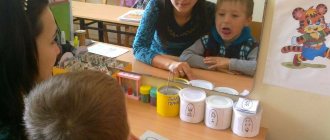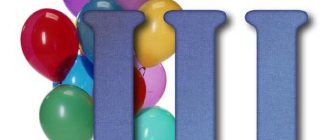In high-level professional theater, the viewer never suffers from poor hearing or slurred speech of the participants in the action, although in ordinary life (which the theater depicts) one often has to listen to the words of the interlocutor, even one-on-one. People rarely think about this, and certainly no one perceives an actor’s perfect speech as an achievement. But if the speech is slurred, they will certainly notice and point it out. Articulatory gymnastics for the tongue allows you to avoid this.
Along with texture, skills in creating an image, embodying speech, plasticity, choreography and vocals, mastery of speech is a factor in the professional suitability of an artist.
There is an opinion that speech and voice are from God, and gifted people who are naturally good at speaking are hired as actors. This is not true, speech is an acquired skill, correct and clear speech is a polished skill. We are all born with the same set of organs capable of producing sounds in the same way; the only difference can be in the timbre and tone of the voice. Of course, we do not take into account people whose speech apparatus has been damaged mechanically or suffered as a result of illness.
How exactly we talk about quality is determined by our daily needs. Since in society it is not customary to shout and talk too loudly, and our audience is most often limited to 1-2 interlocutors standing nearby, we do not need an ideal and polished sound. This is the main reason why the average person's speech is inexpressive. To blame the lack of natural data for this is to shift from a sore head to a healthy one. If you set a goal, you can catch up with the sound of an ordinary theater artist in a short time, and articulation gymnastics for adults will help with this.
Why is articulation gymnastics needed?
Learning to speak means training the moving muscles of the tongue, lips and cheeks to work synchronously to produce certain sounds. Articulatory gymnastics is needed to strengthen the muscles of the speech apparatus and develop muscle memory in them. With its help, a speech therapist provides sound for the child, and a professional speaker keeps his main instrument in good shape. A popular way to eliminate speech defects using tongue twisters is also a type of speech gymnastics, since pronouncing a tongue twister is an exercise in technique.
Rules for performing exercises
- It is recommended to perform a set of exercises in a good mood. The articulation is reminiscent of ordinary antics, but differs in the quality of the movements, so nothing prevents you from fooling around and having fun.
- The room should be bright and well ventilated. It is advisable that no one bothers you to study.
- Having a mirror will be a big plus, especially if your acquaintance with articulatory gymnastics is just beginning.
- You can’t exercise immediately after eating, just like on an empty stomach. At least 1 hour must pass since the last meal.
- When performing exercises, do not think about speed, it is secondary. The most important thing is pressure, muscle tension. After class you should feel tired and hot.
- You should not exercise for too long; 15–20 minutes a day will be enough.
Types of exercises
Special exercises are divided according to the muscle groups that are stressed: tongue, lips and cheeks. There are also differences between static and dynamic exercises, that is, for movement and for holding a position.
Static exercises
The effect is achieved by fixing the muscles in a certain position for several seconds. You need to understand that fixation in this key is a conventional term. For example, “tube lips”: if you just put your lips together, it won’t do anything. The lips should precisely stretch forward, to an invisible point, with force and tension. Static will arise at the moment when the movement reaches its limit. Thus, passive articulatory gymnastics is active; the movement is simply not repeated, but is performed permanently.
Dynamic exercises
These are exercises with repetition of certain movements, for example, tongue pricks in the cheek. Movements are performed in different ways, depending on the specifics of the exercise.
- Consistently. A series of 10–15 injections in one cheek, then the same in the other.
- Alternately. Prick to the left, prick to the right.
- Serial. 2-3 injections in one cheek, then the same number in the other.
It is recommended not to perform more than 10 movements in one direction. If you feel that the load is insufficient, increase the pressure.
Exercises for developing tongue muscles article on speech therapy
Exercises to develop the muscles of the tongue.
The tongue takes an active part in the formation of most speech sounds. The clarity of speech largely depends on its work. Particular difficulties arise when pronouncing words with a combination of consonants, when it is necessary to quickly switch the movement of the tongue from one position to another. To strengthen the muscles of the tongue, improve its mobility and switchability, before using exercises in pronouncing sounds, words and phrases with a cluster of consonants, clearly practice the following movements.
1. Stick your tongue out and move it left, right, up, down.
2. Stick your tongue out and make circular movements from left to right, then vice versa - from right to left.
3. With your mouth open and your tongue slightly protruding, make it wide, narrow, and cup (the tip and sides are slightly raised).
4. Using a slightly raised, tense tip of the tongue, “brush” the upper teeth from the outside and inside, in the direction from the inside of the teeth to the outside and vice versa.
Monitor the correct execution of movements using a mirror. Make sure that all tongue movements are performed easily and freely, without much tension.
Exercises in clearly pronouncing consonant sounds in syllables.
Read the syllables.1. pa, po, pu, py, pe pya, pyo, pyu, pi, pe ta, then, tu, you, te cha, te, tu, ti, te sa, so, su, sy, se sia, syo, syu , si, se zha, zho, zhu, zhi, zhe
2. ap, op, up, ip, ep at, from, ut, yt, et as, os, us, ys, es ash, osh, ush, ish, esh
Exercises in clearly pronouncing words with a combination of consonant sounds.
Read aloud words with a combination of two, three and four consonant sounds: entrance, invest, luggage, tourist, map, flowerbed, service, tail, brush away, snatch, collect, roach, stamp, pimple, swaggering, platoon, swim, weave, set , move, spark, feed, canvas, look, grotesque, breast, cover, moment, smooth, tetanus, smooth out, tetanus, trunk, hawk, fires, sprats, emerge, open, health resort, fight, meet, overseer, uniform, warning , metro builder, colander, wandering, transcription.
Exercises in the clarity and clarity of pronunciation of sounds and words in phrasal speech.
To practice the precision and clarity of pronunciation of consonant sounds and words, it is useful to use tongue twisters, which are built on a combination of consonant sounds that are difficult to pronounce. Reading tongue twisters should begin at a slow pace, while clearly pronouncing each word and each sound. Gradually increase the pace, but make sure that the clarity of pronunciation does not decrease. Read the tongue twisters. Prokhor and Pakhom were riding on horseback. The jackdaw sat on a stick, the stick hit the jackdaw. From the clatter of hooves, dust flies across the field. The bull's white lip was blunt. The water truck was carrying water from the water supply system. Fenya has a sweatshirt, Faya has shoes. On seven sleighs, seven people sat in the sleigh themselves. The chick's chick clung tenaciously to the chain. Prokop arrived and the dill was boiling. Prokop left—the dill was boiling. Just as dill was boiling under Prokop, dill was boiling without Prokop. Mother gave Romasha whey from the yogurt. The bee buzzed and the spider buzzed. Scales on a pike, bristles on a pig. The cap is not sewn in the Kolpakov style, the cap should be re-packed, but the cap should be re-packed. There is grass in the yard, there is firewood on the grass: one firewood, two firewood - do not cut wood on the grass of the yard. The ships tacked, but did not tack. You can’t talk through all the tongue twisters, you can’t talk through all the tongue twisters quickly.
Say small tongue twisters in one exhalation. Maintain the smoothness and consistency of their pronunciation.
Further consolidation of good diction is carried out by reading poetic and prose texts aloud. At the same time, at first it is necessary to continue to monitor the work of the lips, tongue, lower jaw, the clear pronunciation of vowel sounds (stressed and unstressed), the clear pronunciation of consonants, but do not allow their pronunciation to be amplified or emphasized.
Each exercise is practiced until it can be performed easily and freely, without much tension.
When working on diction, it is necessary to take into account the correct use of speech breathing and voice. So, when pronouncing tongue twisters, it is necessary to correctly convey their content, pause appropriately, and get air in a timely manner.
Classes to practice good diction are held daily for 10-15 minutes. The transition to the next exercise is carried out only after the previous one has been worked out quite clearly.
I wish you success!
Exercise sets
To put your speech in order and hone your diction, it is recommended to systematically develop all muscle groups. Articulation gymnastics for the face involves several exercises. It is correct to alternate them in such a way as to give the entire speech apparatus an equal load during the lesson.
For the development of lip muscles
- Pull your lips forward in a tube, make circular movements in one direction, then in the other direction. Imagine holding a pencil with your lips, try to draw as wide a circle as possible.
- Pull your lips forward like a tube and immediately part them into a smile. Repeat with force until the muscles are tired.
- The mouth is slightly open, the lips stretch forward like a tube and turn into a smile. At the moment of transition, the lips “pull” over the teeth with force.
- The mouth is in a slight smile, the teeth lightly bite both lips along the entire length, not strongly, but sensitively.
- The mouth opens as wide as possible (to stretch the lips) and immediately closes. Repeat with force until the muscles are tired.
For the development of tongue muscles
- The mouth is wide open, the tongue protrudes as far forward and back as possible. Perform the exercise slowly, holding your tongue at the farthest point. The exercise should cause tension and fatigue at the root of the tongue.
- The mouth is slightly open, the protruding tongue moves from one corner of the lips to the other, like a pendulum.
- The mouth is closed, the jaws are open, the tongue makes circular movements along the outside of the teeth in one direction, then in the other.
- The tongue rests forcefully on the upper palate, the mouth opens and closes without lifting the tongue.
- Strong tongue thrusts into one cheek, then into the other, the mouth is closed, the jaws are open.
For the development of cheek muscles
- The face stretches horizontally into a stretched smile, then vertically. Imagine that you are being forcefully pulled in different directions, first by your cheeks, then by your chin and the top of your head. When stretching vertically, the lips are gathered into a tube, the cheeks are drawn in.
- Rolling the air mass from one cheek to the other: inflate one cheek with force until it becomes tense, then roll the “ball” to the other cheek and back.
- The corners of the lips rise upward with force, the cheek muscles tense, and the position is held for 5–7 seconds.
- Perform a series of short “smiles” using only the corners of your lips. Please note that the cheek muscles should work when doing this; they will be tired by the end of the exercise. Try to control other facial muscles at the time of execution, they should all be relaxed.
- Place your palms at the junction of your jaws just below your ears on both sides. Using your palms, stretch the skin so that your lips are stretched into a smile without muscle tension. Now smile and relax once - you should feel the muscles of your cheeks working. Perform the exercise carefully, remember the sensation, learn to feel the group of cheek muscles and recognize it.
Find out more about the courses
School of imbuilding and body practices in Novosibirsk. Imbuilding in Novosibirsk. Women's practices.
These exercises, with regular training, will help keep the lower part of the face in excellent shape for a long time (clear contour, absence of a double chin, plump lips), and will also significantly improve the quality of blowjob performance.
1. Exercise Mona Lisa (with a wine cork).
Select a wine cork with a height suitable for your mouth, approximately 3 cm. Hold the cork at height between your teeth and close your lips in front of it. First, do it in front of the mirror, making sure that your lips do not form wrinkles. To do this, you can slightly stretch your lips in a Mona Lisa smile, again making sure that the nasolabial folds do not worsen. 60 times in a row.
2. Spaghetti exercise (with an empty plastic bottle).
You will need an empty 0.5 liter bottle and a cotton cord approximately 1 m long. Tie one end of the cord to the neck of the bottle and place it on the floor. Place the other end in your mouth. Working only with your lips, as if you were pulling spaghetti into your mouth, we try to lift the bottle from the floor, raising it at least 10-15 cm. You can help with your tongue, pressing the cord in your mouth to your teeth, gums, and wrap the cord around your tongue. Teeth are not involved in the exercise! 5-10 lifts in a row. Lips will be irresistible!
3. Exercise Cloud (with a bottle filled with water).
Fill the same bottle with water. Try pouring half of it first. Place your lips around the neck of the bottle and hold it, without using a vacuum or teeth. It is better to do it above the sink or bathtub so that the cloud does not burst into showers of rain on the floor. Select a volume of water in the bottle so that the first hold lasts 20-25 seconds. 5-10 holds in a row. Add a small amount of water every day. Learn to hold 1.5 liters, get a black belt in blowjobs.
4. Exercise Tao.
Teeth open, lips closed. Use your tongue to circle the inner surface of your lips: 72 times in one direction, then the same amount in the other direction. There is no need to rush - try to do the exercise efficiently, so that the lower jaw does not move simultaneously with the tongue. Only after the exercise is completed can you swallow saliva. If at first 72 times will be difficult, start with 36. In the future, the exercise can be done lying down.
5. Exercise Long tongue.
We pull the tongue for 5 seconds, as far as possible, in different directions in this order: forward-remove, up-remove, forward-remove, down-remove, left (while looking to the right)-remove, forward-remove, right (while In this case, we look to the left) - removed, forward - removed. 5 cycles in a row.
6. Exercise Scoop.
Place your relaxed tongue on your lower lip. Using a tense lower lip, wrap your tongue, folding it in half. In the future, learn to fold your tongue without the help of your lower lip. 60 times in a row.
7. Exercise Turning the tongue.
Turn your tongue in your mouth, trying to turn its lower part up. To do this, rest the edge of the tongue against the nearest row of teeth and wrap it in the same side. Then we repeat the same thing, turning the tongue in the other direction. First we study in front of a mirror with our mouth open. In the future we do it with our mouth closed. 60 times in a row.








